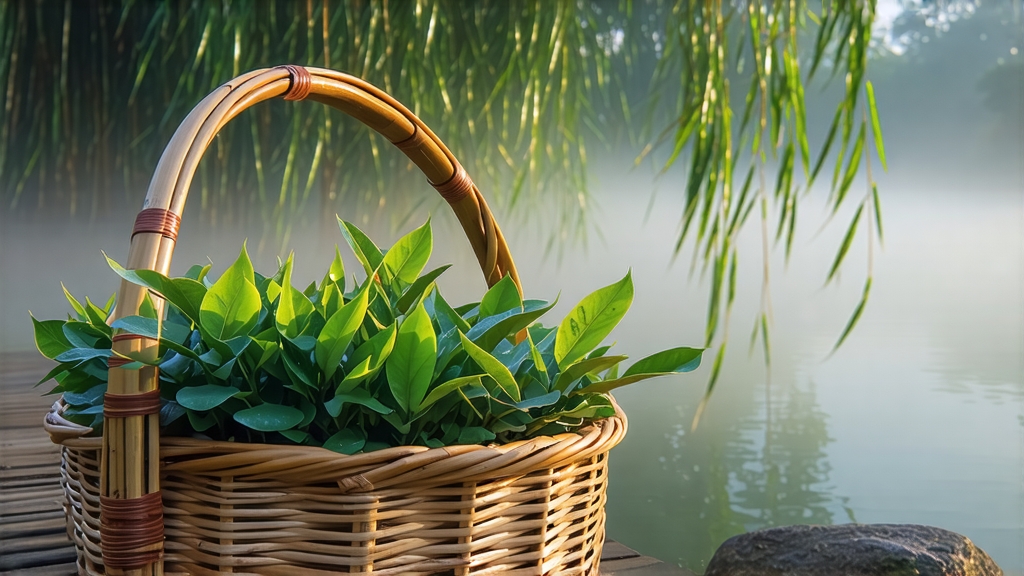
Longjing, literally “Dragon-Well,” is more than a tea; it is a liquid postcard from the hills that cradle Hangzhou’s West Lake, a sip that has greeted emperors, poets, and now curious tea lovers on every continent. Its fame began a millennium ago, yet each spring the same ritual repeats: tiny buds awaken on the qunti zhong bushes, farmers study the sky, and the whole city holds its breath for the first day of picking. To understand Longjing is to witness China’s dialogue between nature and craftsmanship, between history and the ever-renewing present.
Historical whispers place Longjing’s birth in the Tang dynasty (618-907), but solid records emerge during the Song, when the monk Bian Cai cultivated tea on Shifeng Peak and offered it to the imperial court. The Qing emperor Qianlong, touring the south in 1751, supposedly pocketed a handful of leaves while visiting the Hugong Temple. When his mother fell ill in Beijing, he brewed the fragrant souvenir; her swift recovery elevated the tea to tribute status. From that moment onward, eighteenth-century China measured wealth partly in ounces of West Lake Longjing, couriered northward on horseback at break-neck speed.
Today the name is legally protected: only leaves harvested within the 168 km² core zone of Hangzhou’s West Lake Scenic Area may bear the title “Xihu Longjing.” Even within this micro-region, connoisseurs divide the tea into five sub-appellations. Shifeng, or Lion Peak, yields the most sought-after profile—orchid aroma, bean-like sweetness, and a tell-tale “minerality” reminiscent of wet slate. Meijiawu, a valley cloaked in osmanthus trees, adds floral undertones, while Wengjiashan offers a slightly grassier, more astringent edge. Longjing Village itself, clustered around the legendary well where dragons supposedly dwell, produces a balanced, everyday grade that still outshines most green teas grown elsewhere. Beyond these micro-terroirs, the same cultivar planted in Zhejiang’s outer counties becomes “Zhejiang Longjing,” pleasant yet lacking the shimmering complexity born of West Lake’s diurnal temperature swings and quartz-rich soil.
The plant material matters as much as the postcode. Traditional qunti zhong, a seed-propagated landrace, sends roots deep into fractured shale, absorbing minerals that translate into cup character. Modern clonal selections such as #43 ripen earlier and yield a brighter emerald leaf, but purists argue they sacrifice the lingering aftertaste known as huigan. Farmers therefore hedge their bets, interplanting old and new bushes to balance yield, frost resistance, and flavor.
Craft begins in the field. Picking season opens around Qingming, the early-April grave-sweeping festival, when nights are cool enough to lock amino acids inside the bud. The choicest grade, mingqian, consists solely of one bud and half-open leaf plucked before the spring rain. A skilled picker harvests barely half a kilogram per day, enough to produce 100 g of finished tea. Leaves arrive at the village workshop within two hours; any delay triggers enzymatic browning that would flatten the signature jade color.
Withering is minimal—leaves are simply spread on bamboo trays for two to three hours, allowing surface moisture to evaporate while internal water content remains near 72 percent. The real magic lies in pan-firing, a choreography performed on a slightly concave cast-iron wok heated to 80 °C. The master—often a wiry grandmother whose forearms are maps of burn scars—rakes 100 g of leaves across the surface with bare hands, pressing, shaking, and tossing in rhythms that resemble a flamenco dancer’s footwork. During the first ten minutes, the goal is “killing green,” deactivating oxidative enzymes with rapid high heat. Temperature then drops to 60 °C for the shaping phase: palms press leaves against the wok, coaxing them into the famous flat, sword-like profile. Each batch receives roughly twenty minutes of intimate contact between human skin and fire-touched metal, a technique no machine has yet replicated without scorching the edges. Finally, leaves are cooled on wicker screens, then re-fired at 50 °C to reduce moisture to 5 percent, ensuring shelf stability while preserving the fresh, nutty fragrance that recalls toasted pumpkin seeds.
To brew Longjing well is to respect its delicate architecture. Begin with a tall, thin glass; transparency allows you to watch the “tea dance” as leaves hydrate and